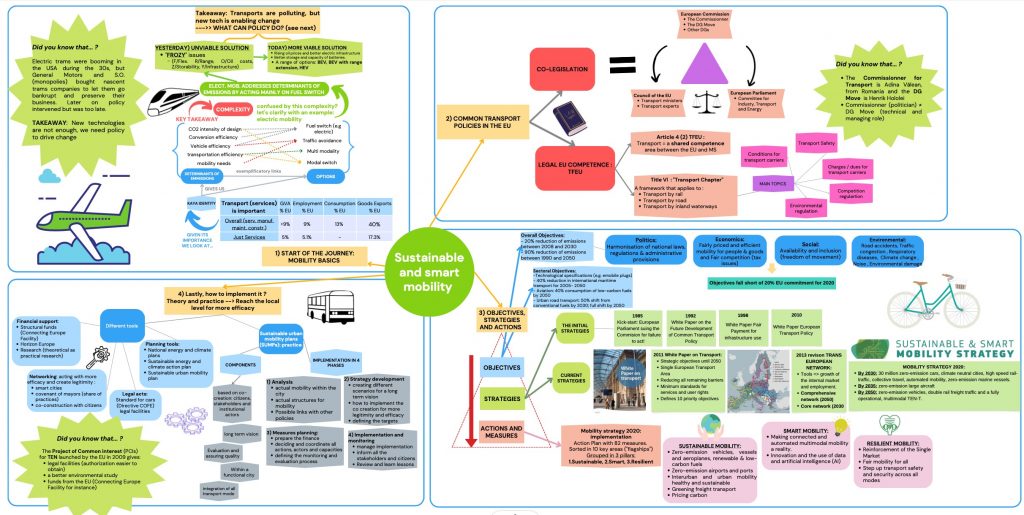
Circular Economy
7 November 2022
On Climate Education and perfect cakes
9 November 2022By Titouan Coupry, Luca De Carolis, Christiana Kyriazi, Alexis Reymondon
At the EU level, all greenhouse gas emissions statistics point to the same problem: the transport sector is a huge emitter of CO2. However, new technology (e.g. electric cars) is enabling change. Therefore, it makes sense to ask what European policymakers can do to accelerate it.
The legal basis on which the EU can act to tackle GHG emissions in the transport sector is article 4 and Title VI, “the Transport Chapter” that applies to five main topics.
Concerning the co-decision process, it is the European Commission, and particularly the Directorate General of Transport, that proposed a plan to the European Parliament and the European Council. Both have to discuss and vote on its key initiatives.
How is European legislation seen in practice? The EU has developed objectives within the political, economic, social and environmental aspects accelerating specific strategies that lead to actions for a more sustainable transport policy. All the objectives fall short of 20% EU commitment for 2020. The current Mobility Strategy 2020 is targeting zero-emission vehicles, climate neutral cities and collective transport and has developed an action plan with 82 measures grouped in three pillars: 1. Sustainable, 2. Smart and 3. Resilient.
Finally, the transport’s sector must not be seen only as transnational but also as a national one. The implementation at the local area is the true goal for the EU. That is why she has developed different tools based on co-construction to act with more efficiency and efficacy, as we can see in the sustainable Urban mobility plans.



